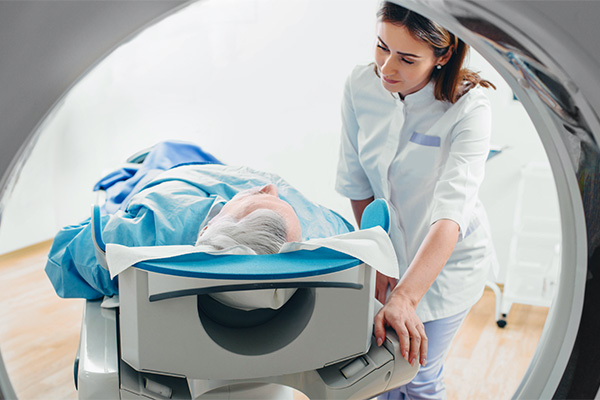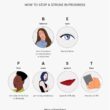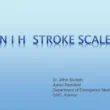Stroke Diagnosis – CT Scan MRI Blood Tests
Revealing the Stroke: Evaluation and Testing-Based Diagnosis
Stroke is one of the world’s leading causes of disability and death. To reduce brain damage and enhance outcomes, stroke requires prompt diagnosis and treatment. This blog post explores the several tests and examinations used to determine the type of stroke and its location in the brain, providing an in-depth look at the diagnostic process for stroke.
Table of Contents

Leaving No Trace: An All-Inclusive Method
Stroke Diagnosis – CT Scan MRI Blood Tests
A multifaceted method is used to diagnose a stroke, integrating data from:
- Neurological Examination: Determining the neurological status of an individual aids in the detection of possible stroke-related disabilities.
- Imaging tests: MRIs and CT scans offer visual data about the brain and can identify bleeding or damage from strokes.
- Blood Tests: By excluding other possible causes of comparable symptoms, blood sample analysis can assist in identifying underlying diseases that raise the risk of stroke.
There is not much time left. When it comes to stroke rehabilitation, every minute matters. The goal of these tests is for doctors to find the best course of treatment as fast and effectively as possible.
Neurological Exam: Evaluation of Brain Activity
Stroke Diagnosis – CT Scan MRI Blood Tests
An essential initial step in diagnosing a stroke is a neurological examination. This entails evaluating several facets of brain activity, such as:
- Level of consciousness: Physicians will evaluate responsiveness and alertness.
- Mental state: An assessment is made of orientation, memory, and cognitive function.
- Motor function: Reflexes, muscle strength, and coordination are assessed.
- Sensory function: Temperature, discomfort, and touch perception are evaluated.
- Vision: Tests are performed on visual acuity and field of vision.
- Speech and language: Speaking, understanding, and writing skills are assessed.
The location and severity of the stroke can be inferred from the neurological examination results.
Examining the Brain Using Imaging Tests
Stroke Diagnosis – CT Scan MRI Blood Tests
Imaging studies produce finely detailed images of the brain that help medical professionals see possible damage from strokes. The two primary imaging methods employed are as follows:
- A computed tomography (CT) scan: produces fine-grained cross-sectional images of the brain using X-rays. It’s a simple, easily accessible test. A CT scan can:
- Identify brain hemorrhagic stroke hemorrhage
- Recognize the early indicators of an ischemic stroke, such swelling
- Eliminate any further possible causes of the symptoms, such as infections or malignancies.
- Magnetic Resonance Imaging, or MRI: Strong magnets and radio waves are used in an MRI to provide precise images of the brain. Compared to a CT scan, it can offer more precise information on the kind and degree of stroke damage. An MRI is capable of:
- Distinguish between a hemorrhagic and an ischemic stroke.
- Find mild brain injury that a CT scan missed
- Assist in locating the blood clot that is causing the stroke (ischemic stroke)
Stroke Diagnosis – CT Scan MRI Blood Tests
The patient’s medical condition, equipment availability, and urgency all play a role in which CT scan or MRI is selected.
Blood Testing: Determining Correlates
Blood testing can assist in the diagnosis of stroke by:
- Testing blood sugar: Diabetes that is not under control raises the risk of stroke.
- Assessing cholesterol: Elevated cholesterol levels may be a factor in the accumulation of plaque within arteries.
- Assessing blood clotting function: Stroke risk may be elevated by specific blood diseases.
- Checking for infections: In rare circumstances, infections may resemble the signs of a stroke.
Stroke Diagnosis – CT Scan MRI Blood Tests
Blood tests also assist in determining any underlying medical issues that may have contributed to the stroke, which enables medical professionals to modify treatment plans and target stroke prevention going forward.
Piecing Together: Arriving at a Diagnosis
Stroke Diagnosis – CT Scan MRI Blood Tests
Doctors can often diagnose the type of stroke (ischemic or hemorrhagic) and pinpoint its site in the brain by combining the results of the neurological examination, imaging studies, and blood testing. To maximize the chances of recovery and to start the right kind of treatment, this information is essential.
Recall that the reduction of brain damage and enhancement of stroke outcomes are contingent upon prompt diagnosis and intervention. Get medical help right away if you think you may be having a stroke. Every minute matters!


